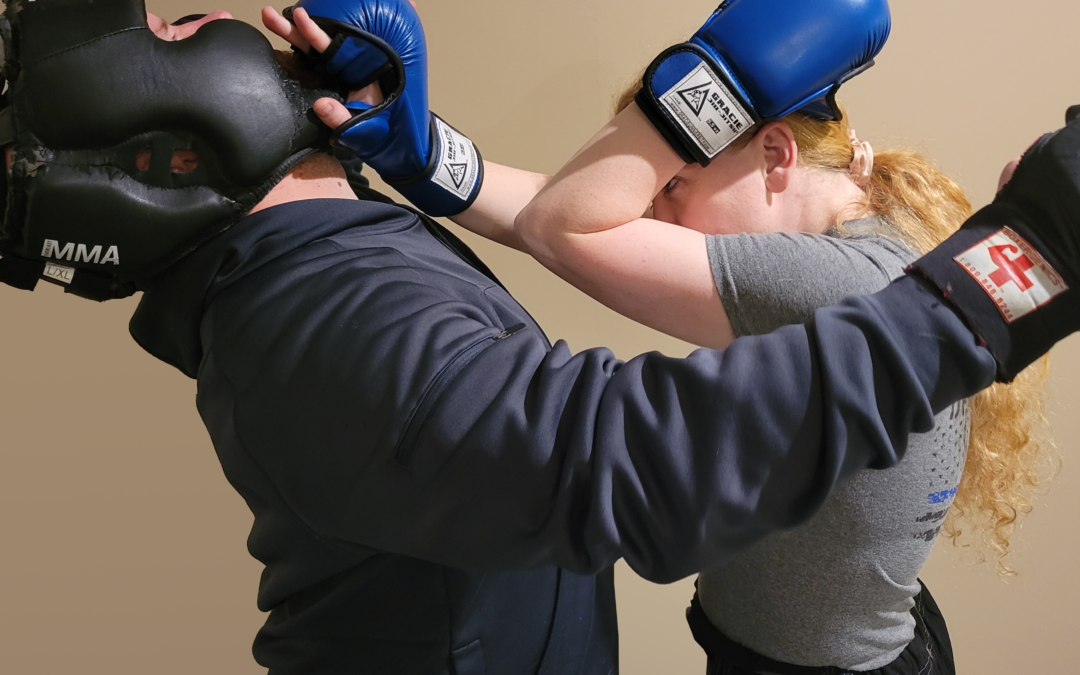Self-defense situations can be unpredictable and intense, and it is important for individuals to be prepared and trained in self-defense techniques to protect themselves if necessary. One question that arises in self-defense training is how often a confrontation stays standing versus how often it goes to the ground. In this post, we will examine this question and cite statistics and references from the FBI.
The FBI’s Uniform Crime Report states that there were approximately 1,203,808 violent crimes reported to law enforcement agencies in the United States in 2019, of which 16.6% were classified as aggravated assaults. An aggravated assault is an unlawful attack by one person on another with the intent to inflict severe or aggravated bodily injury. This type of assault can occur with or without a weapon and can result in serious injuries or death.
The frequency of standing versus ground self-defense situations can be affected by many variables, such as the size and strength of the individuals involved, the environment, and the presence of a weapon. Despite these variables, there are some statistics that provide insight into the prevalence of standing versus ground self-defense situations.
According to a study of 51 law enforcement officers in the FBI’s Law Enforcement Bulletin, 85% of physical altercations resulted in both the officer and the suspect going to the ground. This statistic suggests that ground self-defense situations may be more common in law enforcement scenarios than standing ones. It is worth noting that law enforcement altercations may not be representative of civilian self-defense situations.
In a study published in the Journal of Trauma and Acute Care Surgery, researchers analyzed 107 self-defense cases involving civilians. The study found that 62% of the self-defense situations involved the defender standing up, while 38% involved the defender going to the ground. This statistic suggests that standing self-defense situations may be more common among civilians than ground self-defense situations.
There may be several reasons why law enforcement scenarios are more likely to go to the ground than civilian cases. One possible explanation is that law enforcement officers are trained to take criminals to the ground as a way to control and subdue them. This technique can be effective in preventing suspects from fleeing or using weapons, which is crucial in law enforcement scenarios.
It is worth noting that the success rates of standing versus ground self-defense techniques may also vary. In a study published in the Journal of Strength and Conditioning Research, researchers analyzed the effectiveness of standing versus ground self-defense techniques in a controlled training environment. The study found that standing self-defense techniques were more effective at preventing an attacker from achieving their goal (69% success rate) compared to ground self-defense techniques (46% success rate).
While statistics can provide some insight into the frequency and effectiveness of standing versus ground self-defense situations, it is important to remember that every situation is unique. Individuals should be trained in a variety of techniques to prepare for different scenarios and take steps to reduce their risk of being in a self-defense situation.
This is why, at Top Defense, we train in three primary unarmed distances and levels – from a sparring distance, from a clinch or grabbing position, and on the ground. Included in our strategies are “dirty fighting” techniques from all positions, giving you the best chance of success and survival.
The FBI’s National Crime Information Center recommends the following safety tips:
- Be aware of your surroundings and the people around you.
- Avoid isolated areas, especially at night.
- Trust your instincts. If something feels off or uncomfortable, it is better to be safe than sorry.
- Stay alert and attentive to your surroundings. Avoid distractions like texting or listening to music.
- Carry a personal alarm or other self-defense tool if permitted in your area.
In conclusion, while statistics can provide some insight into the prevalence and effectiveness of standing versus ground self-defense situations, it is essential to remember that every situation is unique. Individuals should be trained in a variety of techniques to prepare for different scenarios and take steps to reduce their risk of being in a self-defense situation. By being aware, prepared, and trained, individuals can increase their chances of staying safe in a self-defense situation.


Recent Comments